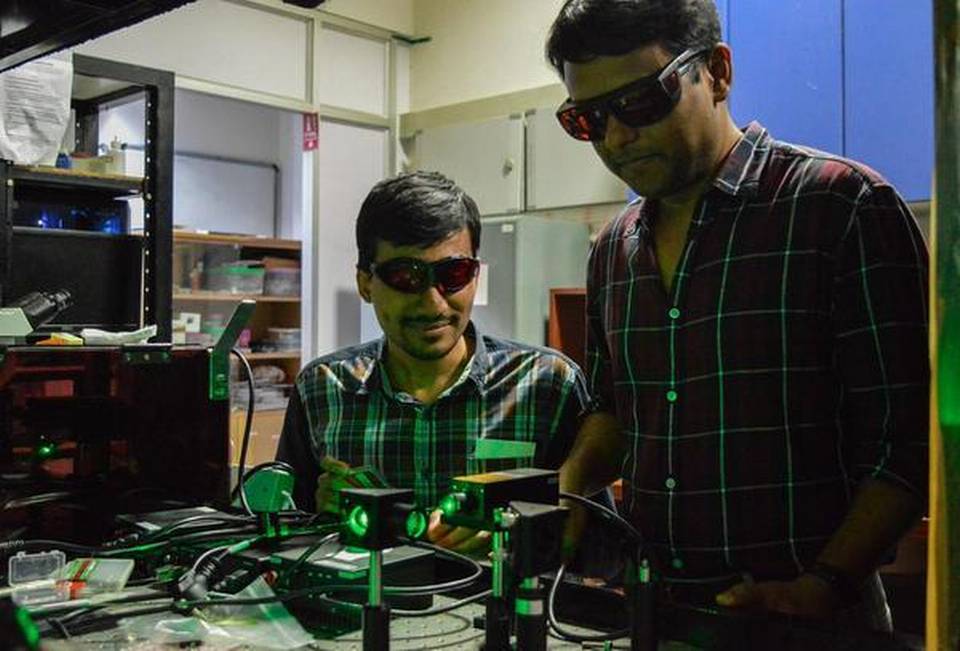Plasmonic tweezers are limited by the fact that they are fixed in space and can therefore only trap objects that come close to them.
Researchers at the Centre for Nano Science and Engineering at the Indian Institute of Science (IISc), Bengaluru, have developed a technique to trap and move tiny objects in the nanoscale using optical “tweezers” employing light. This is a tool that can be used to pick and move small suspended particles even including cells. This research has been published in Nature Communications.
Optical tweezers have been known for about thirty years now and are used in biology to hold and manipulate particles; however, they have a limitation when it comes to nanosized particles. This was partly solved with the development of “plasmonic tweezer” which works on the principle that when a disc of noble metal, like gold, is illuminated with light, it creates an electromagnetic field around the disc. This field can attract and hold on to tiny particles.
Plasmonic tweezers are limited by the fact that they are fixed in space and can therefore only trap objects that come close to them. Though the team, in an earlier work, showed that such plasmonic tweezers could be manoeuvred with a combination of light and magnetic fields, they could not apply the technique to some types of colloids.
Tweezer-in-a-tweezer
In the present work, they overcome this limitation by developing a method that uses only optical force. They integrate a silver nanodisc with a microrod made of glass and the combination can be manipulated using laser beams alone. This “tweezer-in-a-tweezer” approach can trap objects of about 40 nanometres in size, using a single laser beam. This is the typical size of a virus or DNA. “The optical tweezer holds the plasmonic tweezer and the plasmonic tweezers trap our target nanoparticles, therefore tweezer (plasmonic) in tweezer (optical),” says Souvik Ghosh, first author of the paper.
As the size of any colloidal particle decreases, for instance from micro-scale to nano-scale, the movement due to Brownian motion or random fluctuation increases. “Therefore, holding a single silver nanodisc with a focused laser beam (the optical tweezer) is challenging and needs high laser intensity to generate enough force to overcome the fluctuations,” explains Ghosh. If, in order to reduce the required laser intensity, the size of the disc were reduced, the plasmonic properties would be lost. Therefore, the team attached a dielectric microrod made of glass which while preserving the plasmonic property, reduces the thermal fluctuations by an order of magnitude. “The intensity required is about 100 times lower that what a regular optical tweezer typically uses to hold an object of similar dimensions,” he explains.
“The technique is ready for real world applications,” says Prof. Ambarish Ghosh, in whose lab the research was carried out. “Simplicity and ease of implementation are the biggest USPs for this device. It is patented and we are already in discussion with a company for licensing.”
source: http://www.thehindu.com / The Hindu / Home> Sci-Tech> Science / by Shubashree Desikan / September 28th, 2019
